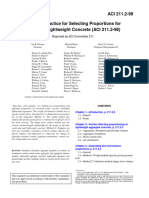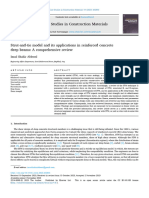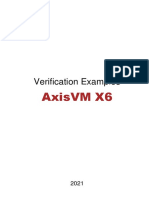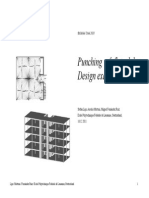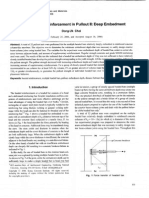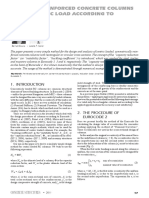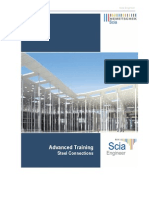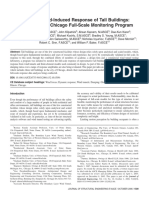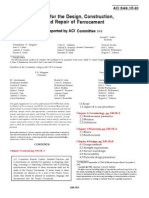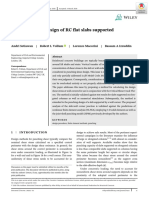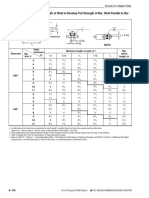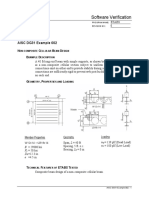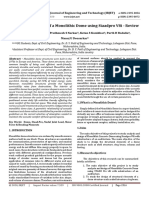0% found this document useful (0 votes)
263 views13 pagesTruss Design and Analysis Procedure
1. The procedure outlines developing a truss model of a structural component by identifying struts, ties, and nodes and verifying equilibrium and geometry.
2. The forces in the truss members are then analyzed to check that the design capacities of struts, ties, and nodes are satisfied and reinforcement can be developed.
3. The document provides an example of sizing struts and ties such that the stress in a strut and force in a tie are at their limits based on the geometry of the truss.
Uploaded by
John Richard NelsonCopyright
© © All Rights Reserved
We take content rights seriously. If you suspect this is your content, claim it here.
Available Formats
Download as PDF, TXT or read online on Scribd
0% found this document useful (0 votes)
263 views13 pagesTruss Design and Analysis Procedure
1. The procedure outlines developing a truss model of a structural component by identifying struts, ties, and nodes and verifying equilibrium and geometry.
2. The forces in the truss members are then analyzed to check that the design capacities of struts, ties, and nodes are satisfied and reinforcement can be developed.
3. The document provides an example of sizing struts and ties such that the stress in a strut and force in a tie are at their limits based on the geometry of the truss.
Uploaded by
John Richard NelsonCopyright
© © All Rights Reserved
We take content rights seriously. If you suspect this is your content, claim it here.
Available Formats
Download as PDF, TXT or read online on Scribd
/ 13



